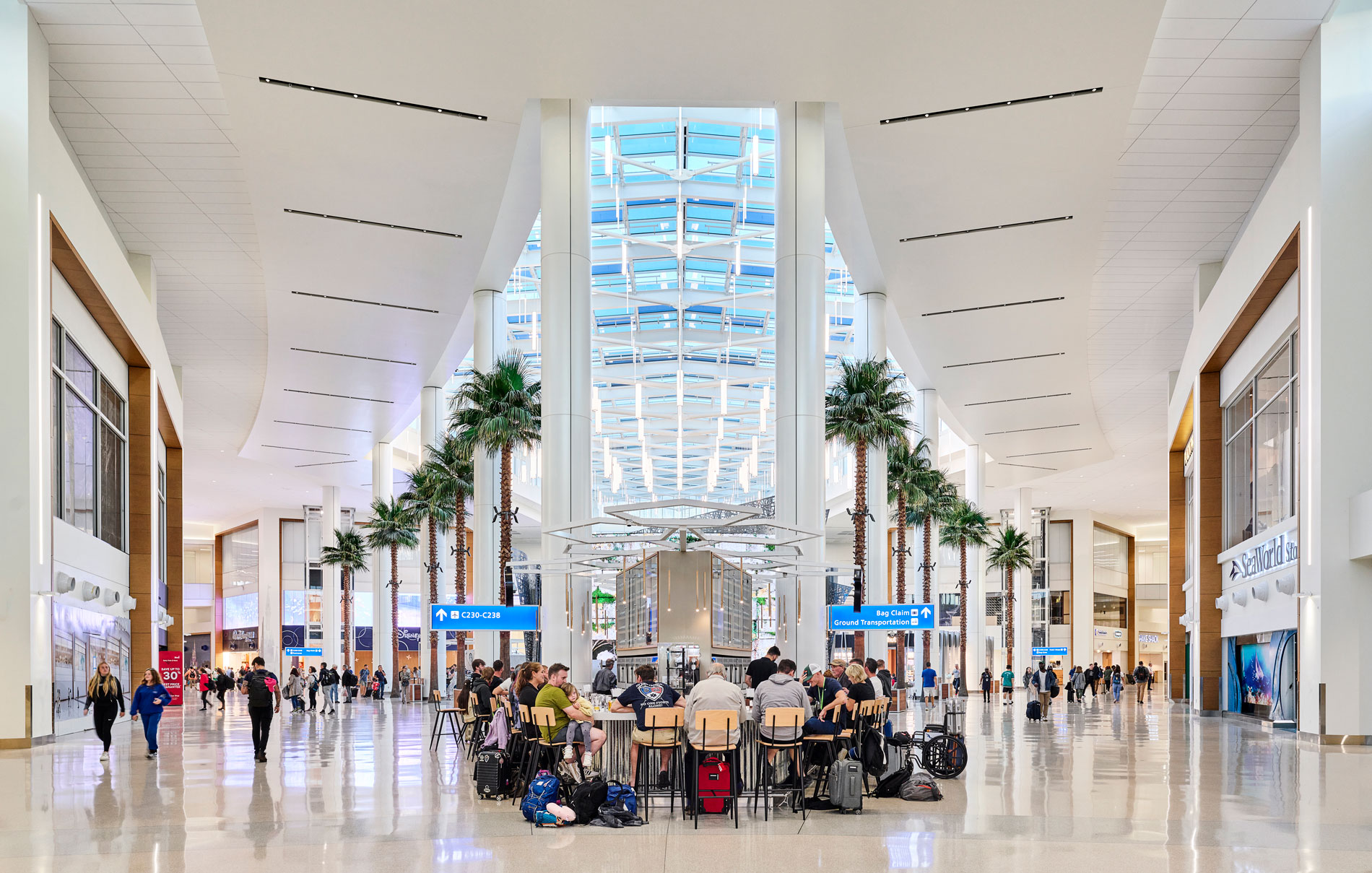Terminal C's Boulevard is adorned with a Grand Skylight that introduces dappled daylight and supports lush foliage.
Orlando’s Terminal C supports the airport’s growing passenger volume and reinforces its reputation for overall excellence in traveler satisfaction. It also showcases the next generation of The Orlando Experience®: a seamless, low-touch environment complete with an exciting combination of concessions, interactive media displays and iconic architecture.
The terminal’s plan shifts the paradigm of traditional airport planning by interchanging the arrivals and departure levels. Central Florida’s daylight and gardens welcome passengers arriving from long flights. They enter a grand, light-filled space at the top level of the terminal.
Among the Terminal’s signature architectural elements is The Prow. This sets an uplifting tone at curbside, especially when seen against a dramatic Florida sky. Ambient natural light flows in from the curbside curtainwall, as well as from the Terminal’s skylit spine, help bring the outdoors inside and guide passengers to world-class amenities and then on to their gate.
All major building elements—ticketing, security, concessions, gates and baggage claim—are aligned along a Boulevard. This leads passengers on a linear journey. A Grand Skylight adorns the Boulevard to introduce dappled daylight and supports lush foliage. The Boulevard also connects Terminal C’s two signature civic spaces—Palm Court and Town Square— with MCO’s Intermodal Terminal Facility.

Enhancing the Passenger Experience
Palm Court is located airside, at the terminus of The Boulevard skylight. As the grandest of Terminal C’s civic spaces, this vibrant location features shopping, experiential media, dining, socializing and relaxation lounges in a daylit, garden-like atmosphere. Second-story retail and lofted airline clubs overlook Palm Court and its experiential media element. This element features animated, interactive environments that encourage engagement as travelers pass by.
Meanwhile, Town Square is located landside, at the terminus of an elevated international arrivals corridor. This light-filled, spacious arrivals hall on the terminal’s upper-most level provides a stark contrast to the buried baggage claims found in so many other airports. It is imbued with a sense of welcoming and openness that enhances the international and domestic passenger experience.
Master Plan
Orlando has a distinct advantage over its peers when it comes to growing both airside and landside capacity. It is among the world’s largest airports by land mass—only King Fahad in Saudi Arabia, Denver and Dallas-Ft. Worth are larger. While initial studies looked at replicating the North Terminal’s satellite concourse configuration, planners ultimately chose a linear/pier configuration for Terminal C because it minimizes transit times for departing passengers (in this case to an average of eleven minutes), is easier to expand incrementally and offers greater flexibility for international arrivals. Incidentally, it is also a superior configuration during health crises because it allows passengers to disperse more easily (and eliminates the need to congregate for boarding and transit to gates).